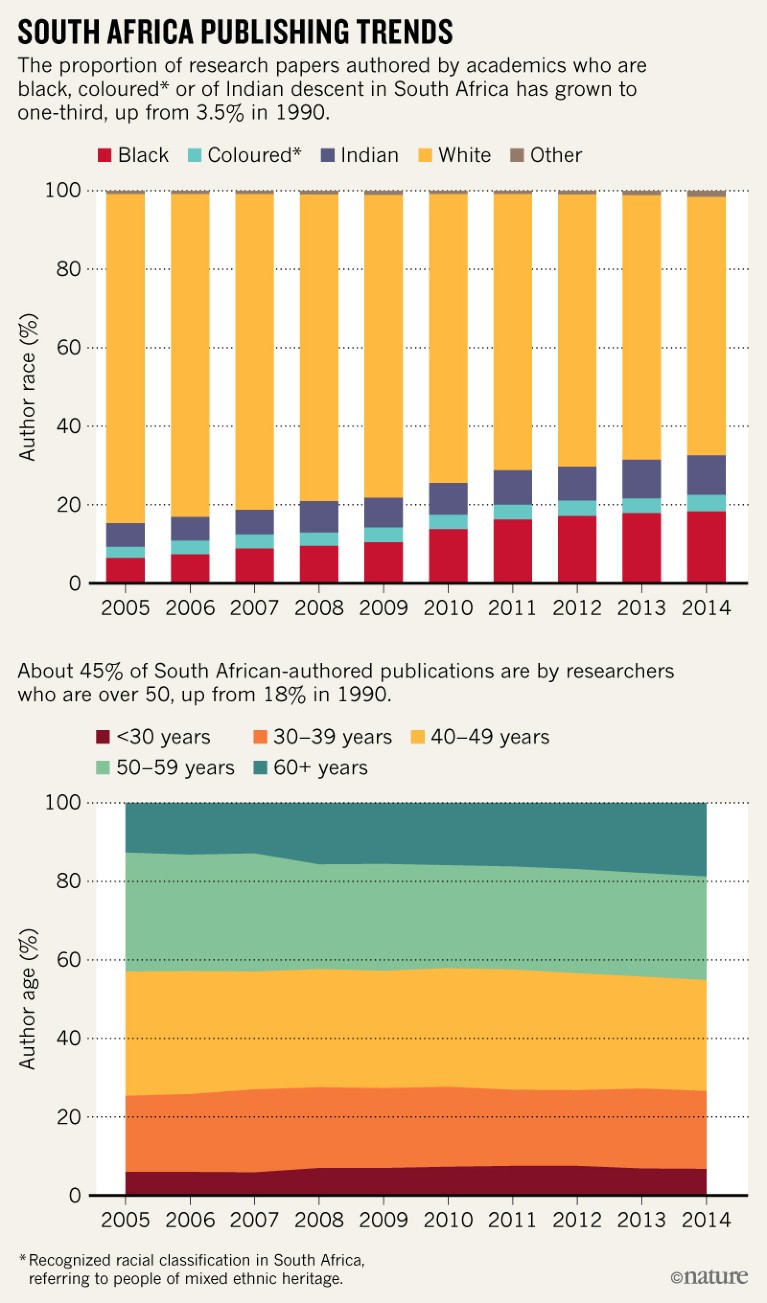CLIMATE
Space station hosts carbon probe NASA’s latest Earth-observing instrument arrived at the International Space Station on 6 May aboard a SpaceX Dragon capsule (pictured). The Orbiting Carbon Observatory-3 (OCO-3) will collect data on how carbon dioxide moves in the planet’s atmosphere. It will monitor areas that aren’t easily surveyed by carbon-measuring satellites, and collect high-resolution data from larger regions than did its predecessors. Researchers hope that data from the three-year OCO-3 mission will increase their understanding of Earth’s carbon cycle, hone climate-change predictions and improve CO2 measurements. OCO-3 will also observe parts of the planet at different times of the day from many other Earth-observing satellites, giving researchers data on important carbon-storage areas — such as the Amazon and the Congo Basin — that are usually obscured by clouds when the other spacecraft fly over.

A SpaceX Dragon capsule containing the Orbiting Carbon Observatory–3 docked to the International Space Station on 6 May.Credit: AP/Shutterstock
RESEARCH
Quake-paper errors The authors of a study in Science on a deadly earthquake that struck Kumamoto in southern Japan in 2016 have retracted their paper after a university investigation found that it contained falsified data and manipulated images. In a retraction notice published on 2 May, Science cited a Kyoto University probe, which could not determine whether the errors were deliberate, but found that responsibility for them lay with Aiming Lin, the corresponding author and a professor at the university (A. Lin et al. Science 364, 444; 2019). Lin did not respond to Nature’s request for comment on the investigation’s conclusions. The 2016 paper purported to show that Mount Aso, an active volcano northeast of Kumamoto City, had halted the rupture zone of a magnitude-7.0 earthquake on 16 April that killed more than 50 people. The university investigation found falsified data in two figures — data overlaid on maps were stretched or rotated in ways that supported the paper’s hypothesis — and plagiarism in one of them. The investigation committee found that Lin had breached his obligations as a researcher, but cleared the other five authors of any wrongdoing.
Social-media data Facebook is giving social scientists unprecedented access to its data so that they can investigate how social-media platforms can influence elections and alter democracies. Twelve teams of researchers from around the world will tackle questions such as how fake news spreads, who distributes it and how to identify it. The researchers will have access to data such as the URLs that Facebook users have shared, and demographic information including gender and approximate age. The company — which has been accused of privacy violations in the past — is developing new protections aimed at shielding its users’ identities. The projects, announced on 28 April, were chosen by the non-profit Social Science Research Council in New York City, and Social Science One, an academic–industrial partnership with ties to Harvard University in Cambridge, Massachusetts. Eight charitable organizations will fund the work. Facebook had no say in selecting the projects.
FUNDING
Research boost Germany’s federal government and the science ministers of its 16 states have pledged more than €50 billion (US$56 billion) over the next 10 years to continue long-running programmes in research and higher education.
The package, announced on 3 May, includes €17 billion until 2030 to extend a pact that guarantees annual budget increases of 3% for Germany’s major research institutions. The combined budget of the country’s main grant-giving agency and of its four large non-university research organizations has more than doubled since the pact was agreed in 2005, to €9.5 billion a year. The ministers also pledged about €4 billion a year from 2021 to 2030 to help universities cope with increasing student numbers and improve teaching quality. Heads of state governments are expected to approve the windfall in June.
EVENTS
Testosterone ruling The independent Court of Arbitration for Sport has ruled that women with naturally high levels of testosterone cannot compete in certain international track events unless they take hormone-suppressing drugs. The court, based in Lausanne, Switzerland, said on 30 April that such athletes must keep their testosterone levels within the typical female range — below 5 nanomoles per litre — for at least 6 months to be eligible to compete in women’s races between 400 and 1,500 metres. The court said there was not enough evidence to suggest that naturally high testosterone levels affected performance in women’s events outside those distances. The ruling means that South African runner Caster Semenya (pictured) will not be able to enter women’s races between 400 and 1,500 metres at major events such as the Olympics without taking suppressants.

South African runner Caster Semenya could be barred from participating in the next Olympics because of naturally high testosterone levels in her blood.Credit: Francois Nel/Getty
Antibiotic warning Coordinated, global action is urgently needed to avert a ‘superbug’ crisis, the United Nations Interagency Coordination Group on Antimicrobial Resistance said in a report released on 29 April. In particular, countries must phase out the use of antimicrobials in farming, invest in research on new antibiotics and diagnostic technologies, and strengthen existing regulation, the report concluded. If no such action is taken, ten million people worldwide could die each year by 2050.
Climate emergency The United Kingdom should make every effort to reach net-zero greenhouse-gas emissions within the next 30 years, a high-level group of independent climate advisers said in a report on 2 May. The country’s existing climate target, set in 2008, is to reduce emissions by 80% by 2050, relative to 1990 levels. In 2017, emissions were about 43% lower than in 1990. But to meet its obligations under the 2015 Paris climate agreement, Britain must make all sectors of the economy carbon-neutral by mid-century, says the government-commissioned report. It adds that the net-zero target, which includes emissions from international aviation and shipping, can be met by spending 1–2% of gross domestic product per year, and cannot use carbon credits issued for emissions-reduction projects overseas. On 1 May, just before the report’s release, the UK Parliament declared a “climate change emergency”. The declaration is not legally binding and there is no clear definition of what it means, but it is taken as a signal of Parliament’s intention to act.
Faulty metal A company that manufactured aluminium parts for NASA knowingly provided faulty materials to the space agency for 19 years, an investigation by NASA and the US Department of Justice concluded. The company, Hydro Extrusion Portland in Oregon, has agreed to pay a US$46-million fine. NASA said on 30 April that the issue cost the agency more than $700 million, and caused the failure of two high-profile Earth-monitoring satellites. The Orbiting Carbon Observatory failed to reach orbit in 2009, after problems with a protective covering called a fairing prevented the spacecraft from separating from its launch vehicle. And in 2011, a similar problem doomed Glory, a satellite intended to measure aerosols in the atmosphere. The company settled with the US government on 23 April, but according to the justice department, Hydro Extrusion Portland “disputes NASA’s positions” and there has been no determination in regards to liability.
FACILITIES
Cosmic-ray hunt China inaugurated the Large High Altitude Air Shower Observatory (LHAASO), a facility to search for the origins of cosmic rays, on 26 April — three weeks after the facility started making observations. Cosmic rays are composed of subatomic particles, such as protons or atomic nuclei, but the origin of ultrahigh-energy cosmic rays is still a mystery. That’s in part because cosmic rays are difficult to trace, having been bounced around by magnetic fields on their way to Earth. LHAASO will take an indirect approach. Set more than 4.4 kilometres above sea level in Daocheng, Sichuan, it will track another form of radiation — ultrahigh-energy γ-rays, which probably come from the same astrophysical phenomena as cosmic rays but are easier to trace.
TREND WATCH
The proportion of scientific articles published by academics in South Africa who are black, ‘coloured’ or of Indian origin has risen almost tenfold since the end of apartheid, to about one‑third, finds a report. (Coloured, referring to people of mixed ethnic heritage, is a recognized classification in South Africa.) In 2014, black academics authored 18% of research papers, Indian academics wrote 10% and coloured academics authored 4%. Together, researchers in these groups were responsible for just 3.5% of South Africa’s research output in 1990. But academic publishing remains disproportionately white, as South Africa struggles with the legacy of apartheid, which ended in 1994. White people comprise 8% of the country’s 54 million inhabitants, but occupy about half of university posts. The system is transforming as expected, given that the number of academics has increased by just over 1% each year on average for the past decade, says Johann Mouton, a researcher in science metrics at Stellenbosch University in South Africa who contributed to the report, published by the Academy of Science of South Africa.

Source: Academy of Science of South Africa



